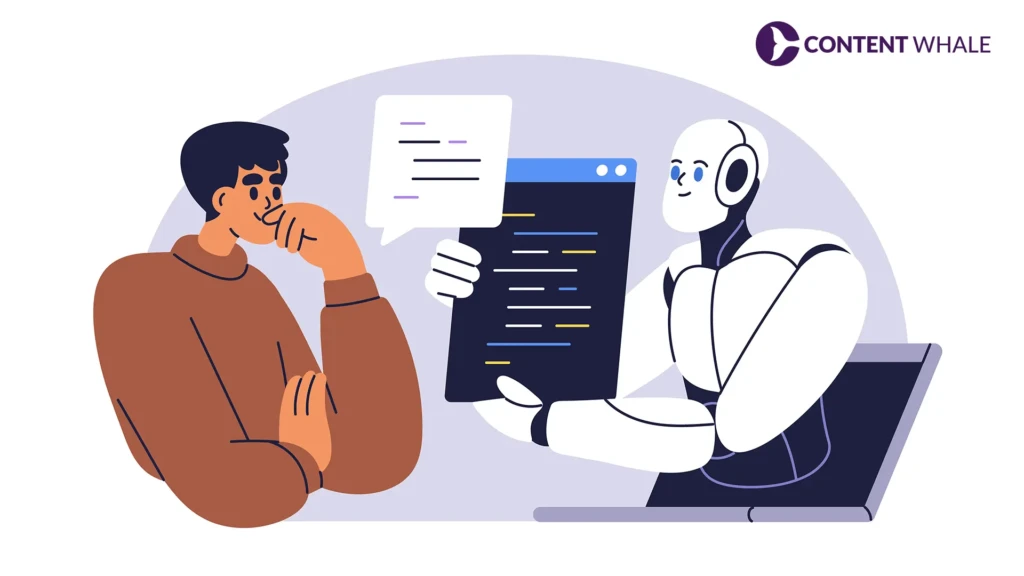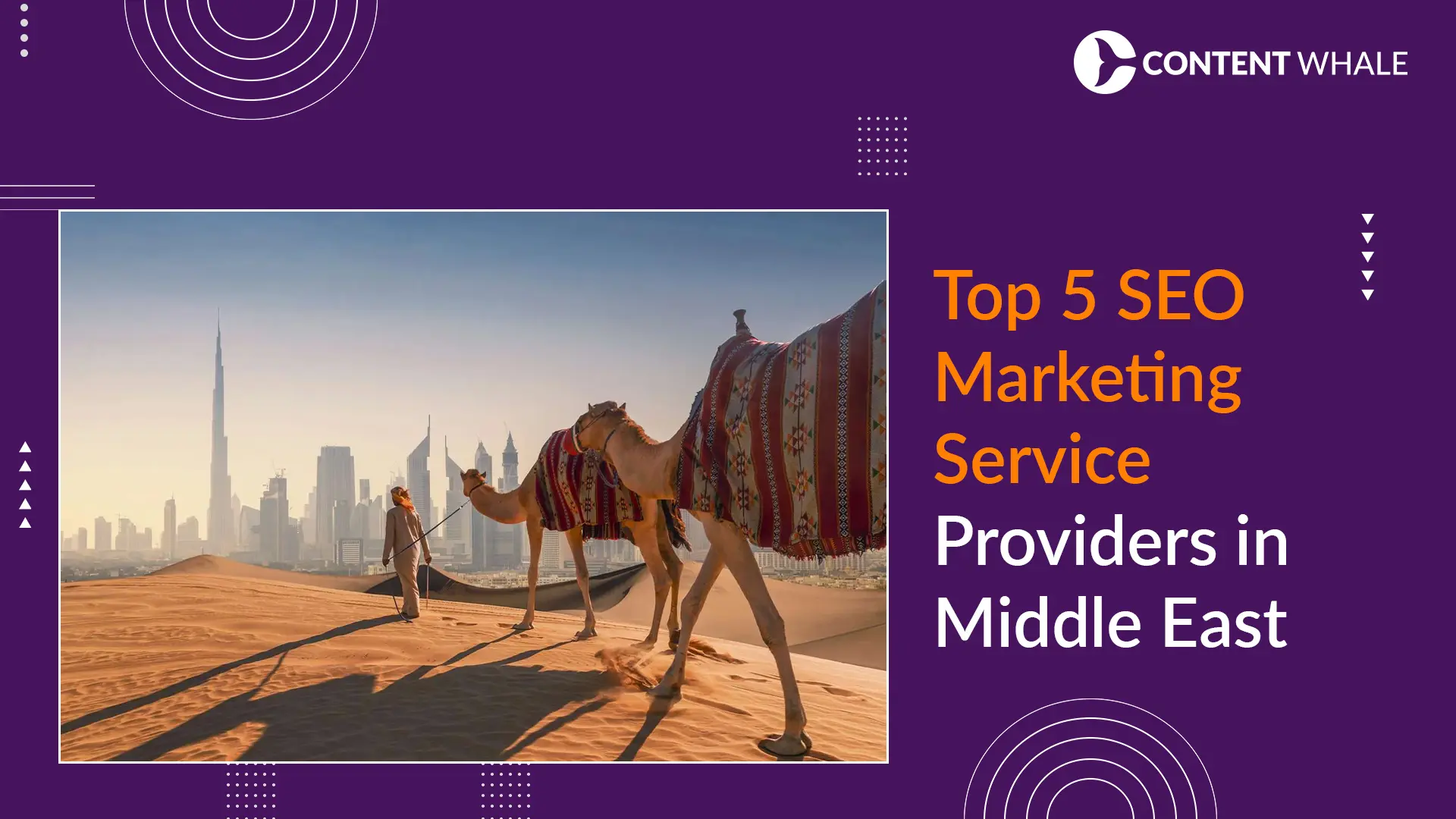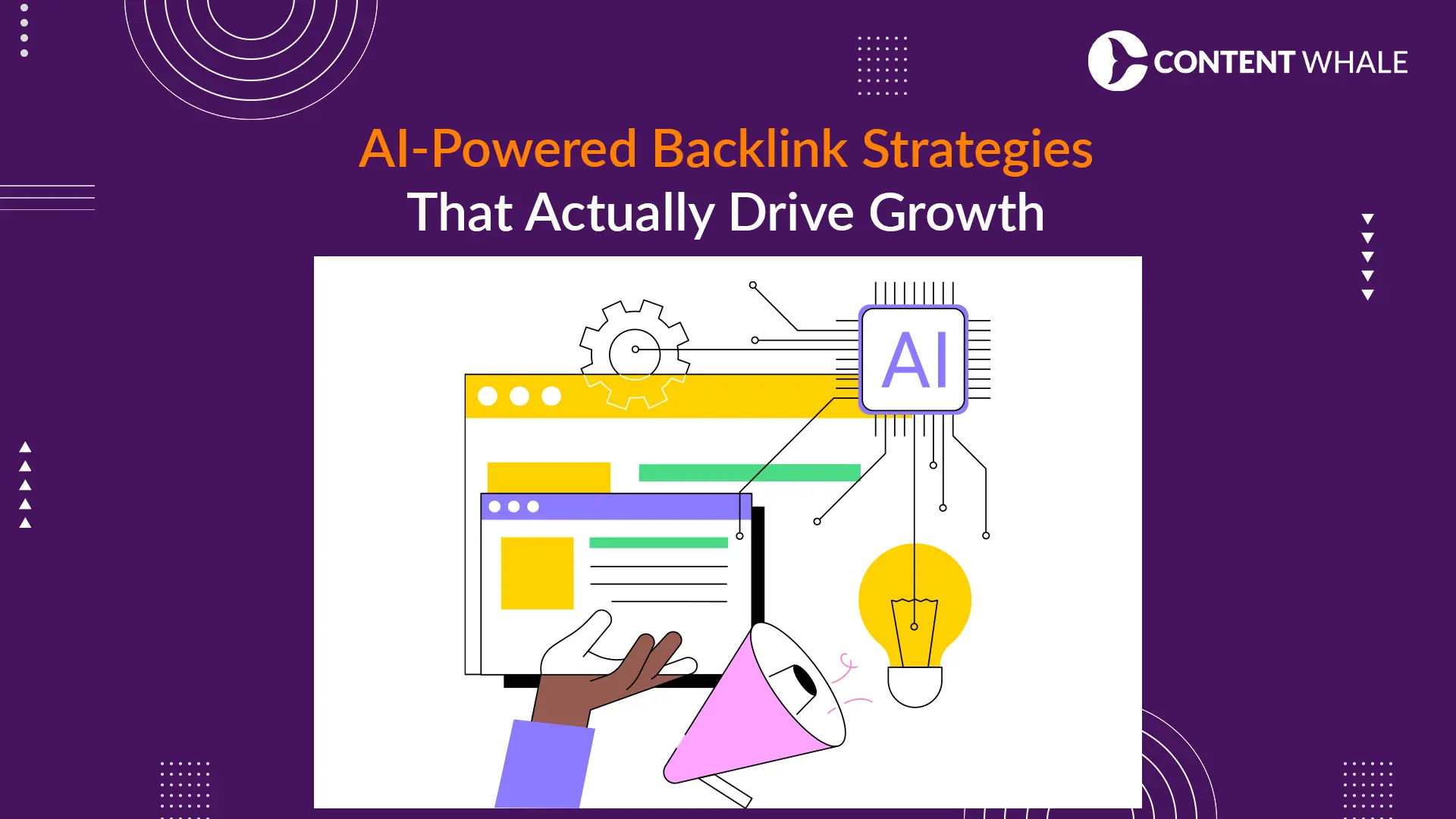Large language models now generate billions of responses monthly across global platforms. ChatGPT, Gemini, Perplexity, and Microsoft Copilot have fundamentally changed information discovery. Traditional search engines return links while AI answer engines provide direct answers.
LLM optimization structures content so AI models accurately understand, recall, and cite your brand. LLM seeding strategically places your brand where these models train and retrieve information. Together, they form the foundation of modern AI search optimization strategies.
Businesses ignoring this shift risk complete invisibility in AI-powered search results. Your competitors are already adapting their content strategies for machine visibility. This guide explains how to position your brand for AI-driven discovery.
The Rise of AI-Driven Search and Answer Engines
AI Overviews now appear in 47% of Google searches (Source), fundamentally changing user behavior. ChatGPT has reached 700 million weekly active users globally (Source). Perplexity processes over 780 million monthly queries.
These platforms don’t send traffic to websites like traditional search engines. They answer questions directly using information synthesized from multiple authoritative sources. Only 8% of users clicked website links when AI summaries appeared (Source).
This creates a zero-click environment where citations matter more than rankings. AI search optimization addresses this new reality head-on. You optimize for being the source AI platforms reference, not for click-throughs.
Difference Between Traditional SEO and LLM Optimization
Traditional SEO focuses on keywords, backlinks, domain authority, and driving website traffic. LLM optimization focuses on entity clarity, contextual consistency, and machine-parsable structure.
Keywords still matter, but context and semantic meaning matter significantly more. Traditional SEO aims for clicks and higher search engine rankings. LLM optimization aims for citations in AI-generated responses. The goal shifts from driving traffic to becoming the authoritative cited source.
How “Seeding” Influences LLM Understanding of Your Brand
LLM seeding establishes your brand’s presence in sources that AI models reference. This includes Wikipedia entries, industry publications, academic papers, and structured databases. These models learn from text patterns across the internet continuously.
If your brand appears consistently in high-quality contexts, AI associates you with topics. This association directly determines whether you get cited in responses. Seeding ensures accurate information about your brand exists in AI-readable formats.

Understanding How Large Language Models Interpret Content
AI models don’t read like humans do at all. They process text as patterns, relationships, and statistical probabilities. Understanding this process helps you create content these systems prioritize.
What Happens When an LLM “Reads” Your Website?
When AI models process your website, they extract entities, relationships, and context. Entities are people, places, products, or specific concepts mentioned. Relationships show how these entities connect within the content.
The model doesn’t memorize your content word for word. It creates representations based on recognized patterns and semantic connections. Clear entity definitions and relationships help models form accurate associations.
Ambiguous content creates weak associations that AI models ignore. The AI might understand your topic but fail to connect it to your brand. Clear, structured information strengthens these critical connections for citations.
Role of Entities, Context, and Credibility in AI Responses
Entities anchor AI understanding of topics and brand associations. When someone asks “What is LLM optimization?”, models search for related entities. If your brand appears consistently alongside these entities, you become an authority.
Context determines specificity and relevance of the information provided. General content about LLM seeding often gets ignored by AI models. Specific examples with data points create stronger contextual signals for citations.
Credibility affects citation likelihood through established authority markers. AI models prioritize sources with domain age, Wikipedia presence, and academic citations. Media mentions and structured data verification also increase credibility scores.
Why LLMs Prefer Structured, Factual, and Source-Aligned Data?
AI models favor content they can verify across multiple credible sources. If three authoritative websites confirm information, the model treats it as reliable. Structured data using schema markup makes this verification process significantly easier.
JSON-LD schema tells models exactly what information means and represents. Factual statements with data backing perform better than opinion-based content. “Our platform increased conversions by 34% for 50 clients” beats vague claims.
Source alignment means your content matches information in other authoritative sources. Contradictions weaken your citation potential across all AI platforms. Consistency strengthens associations and increases likelihood of being cited.

What Is LLM Seeding and How It Improves Brand Mentions?
LLM seeding positions your brand in the information ecosystem AI models reference. This practice directly impacts whether ChatGPT, Gemini, or Perplexity mention your company. Strategic seeding improves brand mentions in AI-generated responses significantly.
Definition and Key Components of Seeding
LLM seeding involves three core components working together. Entity establishment creates clear, consistent definitions of your brand across platforms. Your company name and products should appear identically everywhere.
Contextual placement positions your brand in conversations about relevant topics. This includes guest posts, podcast appearances, conference presentations, and trade publications. Citation infrastructure provides verification points through press releases and research reports.
The Connection Between LLM Seeding, GEO, and AI Overviews
Generative Engine Optimization (GEO) specifically targets AI answer engines. It overlaps with LLM seeding but focuses on formatting for generated answers. Google’s AI Overviews use GEO principles to select cited sources.
LLM seeding creates the foundation while GEO optimizes the presentation. Together, they maximize your chances of appearing in AI responses. AI Overviews cite three or more sources 88% of the time (Source).
Real Examples of How Brands Get Cited
HubSpot consistently appears in ChatGPT responses about inbound marketing. They coined the term, published extensively, and appear in countless defining articles. This deliberate strategy established their authority in the marketing category.
Shopify dominates Perplexity citations for e-commerce platform questions globally. Their developer documentation and case studies provide structured information AI models prefer. Salesforce gets mentioned for CRM through comprehensive, well-structured content.

Key Factors of Effective LLM Optimization
Several technical and strategic factors determine how AI models cite content. Mastering these factors improves your AI search optimization results measurably. Each factor contributes to overall visibility in AI-generated responses.
Entity-Based Optimization and Data Structure
Entity-based optimization starts with clear, unambiguous definitions of concepts. Use consistent terminology and avoid jargon without proper explanation. Define acronyms on first use throughout your content.
Create entity relationships explicitly by connecting related concepts together. If you sell marketing software, connect it to email campaigns and lead generation. Structure data with schema markup for companies, products, and articles.
Build knowledge graph connections by linking related concepts within content. Reference AI search optimization, entity recognition, and semantic search together. These connections mirror how AI models understand and process topics.
Content Tone and Formatting for AI Readability
AI models process text more effectively with specific formatting patterns. Short paragraphs improve parsing while clear headers create topical boundaries. Bullet points signal lists of related items for easy extraction.
Direct statements outperform complex, convoluted sentence structures. “LLM seeding improves brand visibility” is clearer than elaborate explanations. Factual tone beats promotional language for AI model preferences.
Using Schemas and Embeddings for Machine Discoverability
Schema markup turns content into structured, machine-readable data formats. JSON-LD format embeds this data in HTML for search engines and AI models. Key schemas include Organization, WebPage, Article, FAQPage, HowTo, and Product.
Embeddings represent text as numerical vectors for semantic relationships. You can’t directly control embeddings but can write content strategically. Dedicate pages to specific concepts without mixing unrelated subjects.
Building Citation-Worthy Topical Authority
Topical authority comes from comprehensive coverage of related subtopics. Create content covering seeding strategies, GEO tactics, entity recognition, and structured data. Depth matters more than breadth for establishing real authority.
A 200-word article won’t establish authority in any meaningful way. A 2,000-word guide with examples and data might earn citations. Update content regularly since AI models prioritize recent information.
Earn external validation through media mentions and industry backlinks. References in academic papers signal authority to AI models. These external signals weigh heavily in citation decisions.

Common Mistakes in LLM SEO and Seeding
Many businesses misapply traditional SEO tactics to LLM optimization. These mistakes reduce AI citation potential and waste valuable resources. Understanding common errors helps you avoid them in your strategy.
Treating LLM Optimization Like Keyword Stuffing
Repeating keywords doesn’t improve LLM optimization like traditional SEO. AI models understand context and semantics, detecting unnatural repetition easily. Keyword density matters, but context matters significantly more now.
Focus on semantic relationships instead of exact-match keyword repetition. Writing about related concepts strengthens content without forcing keywords. Varied terminology demonstrates comprehensive understanding to AI models.
Overlooking Contextual Consistency Across Platforms
Your brand description on LinkedIn should match your website’s About page. Product descriptions should align across sites, press releases, and directories. Inconsistencies confuse AI models about your actual brand identity.
Standardize brand language through a comprehensive style guide. Use consistent descriptions everywhere your brand appears online. Monitor third-party descriptions and request corrections for errors.
Ignoring Machine-Parsable Metadata and Sources
PDFs and images contain information AI models struggle to extract effectively. Text-based content performs significantly better for LLM optimization. Missing alt text, title tags, and meta descriptions reduce discoverability.
Unstructured data formats create friction for AI model processing. Product specifications in paragraphs are harder to extract than tables. Provide clear citations in your content to demonstrate research quality.
Tools and Metrics for Measuring LLM Visibility
Measuring AI search optimization requires different tools than traditional SEO. You need to track citations, entity mentions, and AI-generated responses. Traditional metrics like pageviews don’t capture LLM optimization success.
Tracking Citations Across AI Platforms
Manual testing provides basic visibility data for your brand. Search for your brand in ChatGPT, Gemini, Perplexity, and Copilot monthly. Record which platforms cite you and for which specific queries.
Automated monitoring tools like Brand24 now track AI platform citations. Set up Google Alerts for your brand name plus AI platform names. Create a citation database tracking topics, platforms, and frequency changes.
Using GEO Metrics, Entity Coverage, and AI Answer Recall
GEO metrics measure generative engine performance through citation rates. Citation position tracks whether you’re first, second, or third source mentioned. Response inclusion measures the percentage of AI answers referencing your content.
Entity coverage measures how completely AI models understand your brand. Test queries about products, services, and executives regularly. Track accuracy and completeness of AI responses over time.
AI answer recall tests whether models remember your published content. Query AI platforms about your unique frameworks or methodologies. Track whether they mention your brand as the original source.
Setting Measurable KPIs for AI-Driven Content Performance
Citation frequency tracks monthly citations across all AI platforms. Target 10-20% growth quarter over quarter for consistent improvement. Entity recognition accuracy measures how AI models describe your brand.
Topic association counts how many target topics generate brand citations. If targeting ten topics, aim for citations on six within one year. Zero-click attribution tracks brand searches after AI platform mentions.

Best Practices to Future-Proof Your Brand for AI Search
AI search continues evolving with new models and citation algorithms. These practices position your brand for changes in model architectures. Future-proofing requires ongoing commitment to AI search optimization.
Optimize for Multiple LLMs (ChatGPT, Gemini, Perplexity, Copilot)
Different AI platforms prioritize different sources and content types. ChatGPT relies heavily on Wikipedia and major publication sources. Perplexity indexes real-time results while Gemini integrates Google’s knowledge graph.
Create content formats each platform prefers for maximum visibility. Wikipedia-style entries, FAQ sections, and structured guides work well. Test content across all major platforms regularly for consistency.
Use Semantic SEO to Improve Cross-Model Understanding
Semantic SEO focuses on meaning rather than exact keyword matches. It improves LLM optimization because AI models understand semantics naturally. Build topic clusters with pillar content about broad topics.
Use natural language variations throughout your content strategy. Include related phrases like “optimizing for large language models” naturally. Answer related questions comprehensively covering why, how, and implementation.
Update Your Content Architecture with AI-Friendly Schemas
Schema markup evolves with new schema types emerging regularly. Stay current with schema.org updates for optimal AI visibility. Implement FAQPage schema since AI platforms pull directly from marked FAQs.
Use HowTo schema for step-by-step guides and instructional content. Apply SoftwareApplication schema for digital products with detailed features. Validate schema regularly using Google’s Rich Results Test tool.
How Content Whale Can Help?
Content Whale specializes in AI search optimization strategies for maximum visibility. The Entity-First Content Framework maps brand entities to target topics systematically. This methodology identifies citation opportunities and creates AI-friendly content.
Continuous citation monitoring tracks brand mentions across all major AI platforms. Monthly reports show citation trends, accuracy metrics, and competitive benchmarking. A B2B SaaS company increased AI citations by 240% in six months.
Conclusion
LLM optimization represents the next evolution in search visibility strategies. AI platforms increasingly mediate how people discover information and brands. Businesses adapting early gain significant competitive advantages in their markets.
Start by auditing your current AI visibility across major platforms. Test how platforms respond to queries about your industry and products. Identify gaps in entity associations and address them systematically.
AI search optimization demands ongoing commitment through regular content updates. Models update regularly and citation algorithms evolve continuously. The brands dominating AI search started optimizing today.
Ready to position your brand for AI-driven discovery and maximize citations? Partner with Content Whale to build a comprehensive LLM optimization strategy.
FAQs
1. What is LLM optimization and how does it differ from traditional SEO?
LLM optimization structures content for AI models to understand and cite accurately. Traditional SEO focuses on rankings through keywords and backlinks. LLM optimization prioritizes entity clarity and machine-parsable formats. The goal shifts from clicks to citations.
2. How does LLM seeding improve brand visibility in AI search results?
LLM seeding places your brand in high-authority sources AI models reference. This includes Wikipedia, industry publications, and structured databases. Consistent presence helps AI platforms associate your brand with topics. This increases citation likelihood significantly.
3. Which AI platforms should I optimize content for?
Prioritize ChatGPT, Google Gemini, Perplexity, and Microsoft Copilot for optimization. These platforms dominate AI-powered search and answer generation globally. Each prioritizes different source types for citations. Test content across all platforms regularly.
4. What role does schema markup play in LLM optimization?
Schema markup converts content into structured, machine-readable data formats. Key schemas include Organization, Article, Product, and FAQPage. Proper implementation helps AI platforms extract accurate brand information. This improves citation frequency significantly.
5. How can I measure my brand’s visibility in AI search results?
Track citations by testing queries in major AI platforms monthly. Record citation frequency, position, and accuracy systematically. Use monitoring tools like Brand24 to automate tracking. Measure entity recognition accuracy and topic associations.
6. What are common mistakes businesses make with LLM optimization?
Businesses often treat LLM optimization like traditional keyword stuffing practices. Other mistakes include inconsistent brand descriptions across platforms. Missing schema markup and unstructured data formats reduce visibility. Promotional tone instead of facts hurts citations.
7. How long does it take to see results from LLM seeding efforts?
Initial citations typically appear within three to six months. Results depend on current authority, competition level, and content quality. Established brands see faster results than newer companies. Building entity associations requires consistent effort.
8. What is the connection between LLM optimization and Google’s AI Overviews?
Google’s AI Overviews use similar entity recognition methods as other platforms. LLM optimization techniques improve AI Overview appearance chances. Structured data and factual content increase visibility significantly. GEO and LLM seeding overlap directly.





